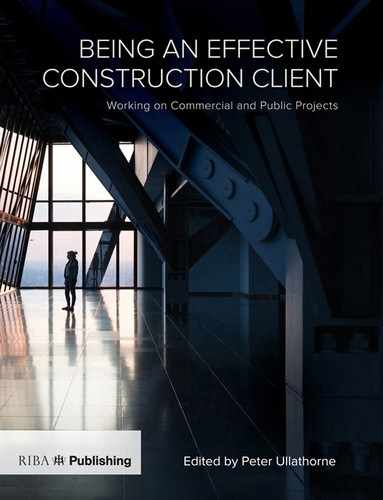Foreword
Clients come in all shapes and sizes. Some engage in construction on a regular basis and as a result their organisational structure and selected business partners reflect this. There are, however, many clients that occasionally need to engage the industry to satisfy a business or infrastructure need. This book is therefore structured to assist all clients. It is written by experts in their field and is injected with real life experiences from clients who have witnessed both excellent and, on occasions, poor outcomes from the construction process.
This book assists clients in understanding how the construction industry works, what they need to do at each stage of the construction process and, importantly, where to find help in what can seem like a minefield to those who have little understanding of procuring construction, other than experiences gained in a more domestic setting – which it must be said is not typical of the professional industry that delivers the majority of our built environment. Having said this, those who consider themselves to be experienced clients can learn from others; best practice is ever-evolving rather than static. One size certainly does not fit all when it comes to engaging in construction activities, but by applying best practice in a measured manner and adapting to suit a particular need, it can be really rewarding with little effort and with avoiding what can be painful and costly consequences when the wrong decisions are made.
This is a must-read guide for clients who want to realise the best possible value from their commissions. Engaging the right people with the right expertise at the right time is key to a successful project, as is understanding the risks to be managed and how best to manage and mitigate these risks by selecting the most appropriate procurement route. Clients, and those engaged in delivering construction, all share the desire to run successful and profitable businesses. Understanding this and ensuring that all are treated fairly is the foundation for building the right relationships.
History tells us that the best construction solutions come from an environment where the client places itself at the centre of an integrated team that works collaboratively. Clients are required to demonstrate leadership from the outset, being clear on what they require and providing the means to measure success and to reward excellent performance. Working as a team requires nurturing. It does not happen unless those leading demonstrate a culture of openness and trust which will only gain traction if the client makes a clear statement on these values at the outset and assumes the primary leadership position. Being a client is not a spectator sport, cheering when things go well and booing when not. Client leadership is covered extensively within this book and for good reason; it makes a real difference when done properly.
The effort required by the client is proportional to the complexity of the proposed project and provided this is understood and the right expertise is brought together, then the construction process can be an enjoyable experience for both frequent and occasional clients, leading to an asset the end users will be delighted to own and use as part of their businesses.
It was no accident Sir Michael Latham chose the name ‘Constructing the Team’ for his report that proposed reforms to the construction industry back in 1994. Twenty years on, we have a catalogue of successful projects in Britain, founded on partnering in a collaborative environment that makes us the envy of the world. We just need to spread this best practice far and wide, and fully take advantage of the benefits it offers.

